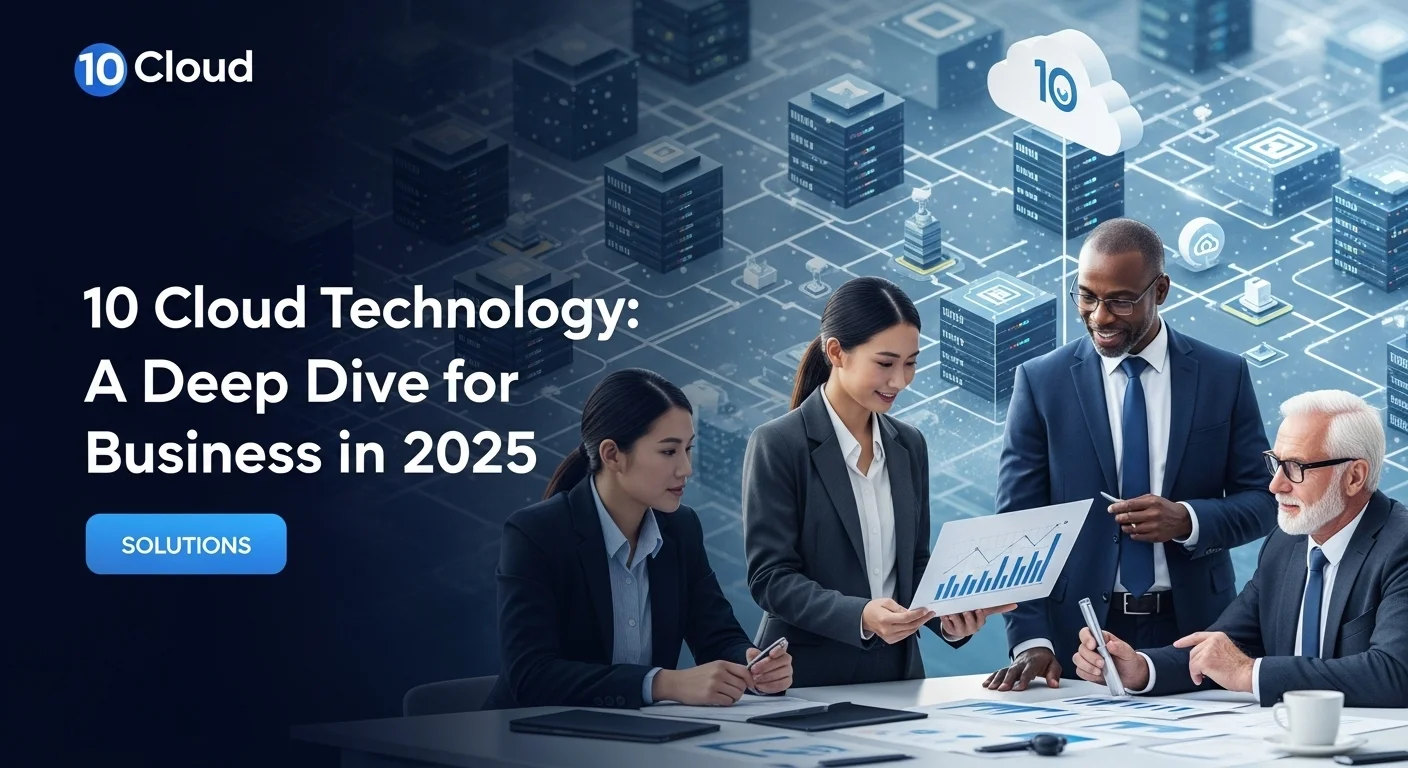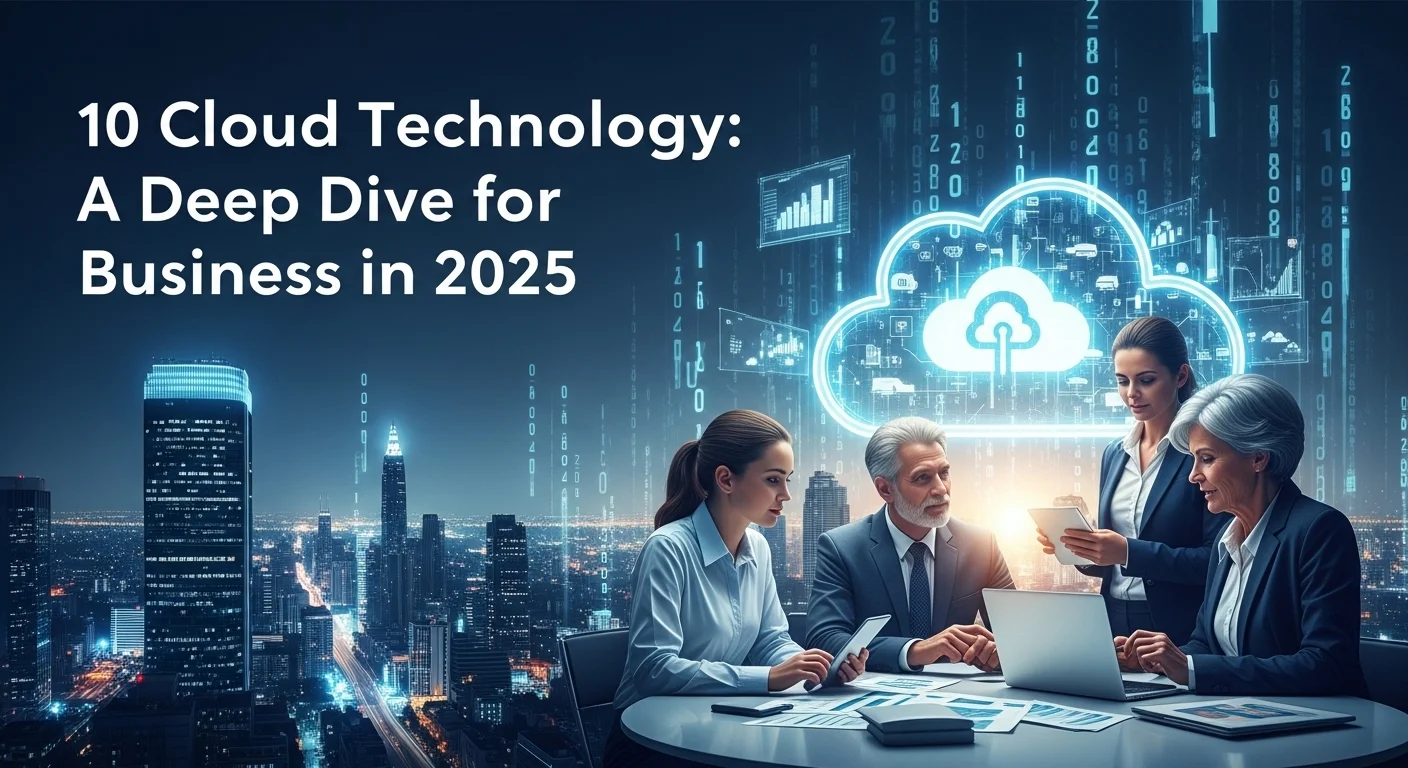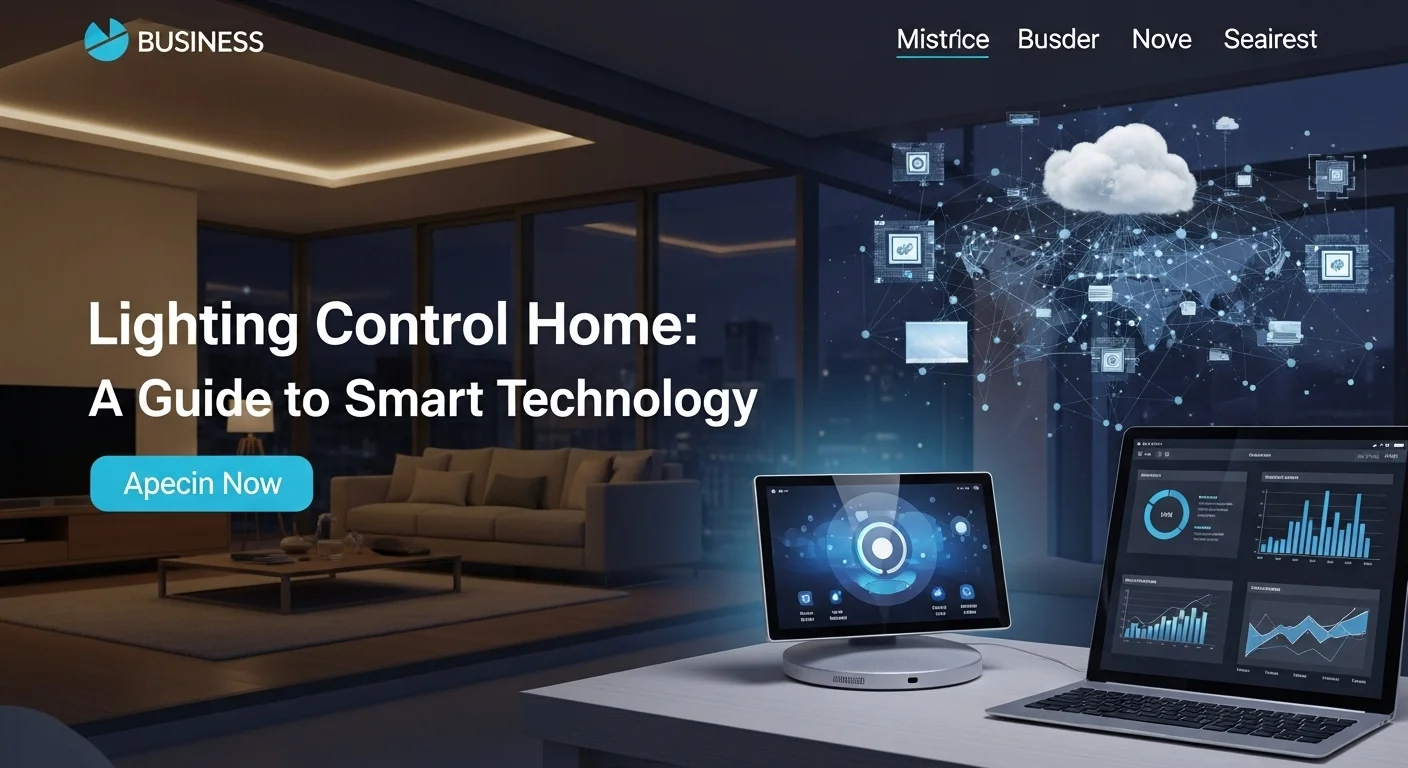The 10 Pillars of Cloud Technology: A Business Leader's Guide for 2025

Executive Summary
For the past decade, I've helped businesses navigate the shift to the cloud, and one thing is clear: understanding the landscape is everything. That's why I've created this '10 Pillars' framework. It’s a simple way to grasp the most critical parts of cloud technology today. In this guide, we'll walk through the dominant service providers you need to know about for 2025. We'll explore the game-changing 'cloud desktop,' which I've seen revolutionize how teams work. We'll also break down the crucial differences between public and private clouds. This isn't just for IT pros; it's for business leaders who want to make smart, future-proof decisions. Getting a handle on these pillars isn't just a good idea—it's your roadmap to growth and innovation.
Table of Contents
- What Are the 10 Pillars of Cloud Technology?
- Pillar 1: The Top Public Cloud Providers
- Pillar 2: The Evolving Digital Workspace
- Pillar 3: The Public vs. Private Cloud Divide
- Pillar 4: Preparing for the Cloud of 2025
- A Practical Guide to Cloud Implementation
- Expert Tips for Improving Your Cloud Experience
What Are the 10 Pillars of Cloud Technology and Why Do They Matter?
In my work as a cloud strategist, I've seen countless businesses get lost in the jargon of digital transformation. To cut through the noise, I started talking about the '10 Pillars of Cloud Technology.' This isn't some new product; it's a simple framework I developed to help leaders understand the ten most critical areas of modern cloud computing. It’s about focusing on the giants who run the show, understanding game-changing tools like the cloud desktop, and planning your strategy for 2025 and beyond. Honestly, mastering these concepts gives you a massive competitive advantage.
At its heart, cloud computing is just about renting computing power over the internet instead of owning and managing it yourself. This gives you access to everything from servers and storage to software and AI. You pay for what you use, which can lower costs, make you more efficient, and let you scale at a moment's notice. My '10 Pillars' framework helps you make sense of this huge and powerful domain.
Pillar 1: The Foundation - The World's Top Cloud Providers
The first step is knowing the key players. The global cloud market is dominated by a few titans who provide the infrastructure that powers millions of businesses. Understanding who they are and what they do best is fundamental. [1, 6, 13] Here’s my breakdown of the leaders shaping the industry:
- Amazon Web Services (AWS): The long-standing market leader. AWS has the most extensive and mature set of tools. I've seen everyone from brand-new startups to massive corporations build their entire business on AWS. [1]
- Microsoft Azure: Azure’s superpower is its integration with the enterprise world. For companies already heavily invested in Microsoft products like Office 365 and Windows Server, moving to Azure often feels like a natural next step, especially for hybrid cloud setups. [6, 14]
- Google Cloud Platform (GCP): Google's strength lies in data. If your business is built on data analytics, machine learning, or AI, GCP is a force to be reckoned with. Their tools, like BigQuery, are best-in-class for handling massive datasets. [1, 30]
- Alibaba Cloud: The powerhouse of Asia. If you have or plan to have a business presence in that part of the world, you need to have Alibaba Cloud on your radar. [1, 8]
- Oracle Cloud Infrastructure (OCI): Oracle has successfully leveraged its dominance in the database world to build a high-performance cloud. It's a go-to for many large enterprises running critical applications, especially those already using Oracle databases. [13, 14]
- IBM Cloud: With a laser focus on hybrid and multi-cloud environments, especially after acquiring Red Hat, IBM is a strong choice for businesses in regulated industries that need to manage complex IT environments. [30, 12]
- Salesforce: The company that practically invented Software as a Service (SaaS). Their cloud is centered around their world-class CRM, but it has expanded into a full suite of tools for sales, marketing, and customer service. [6]
- SAP: Much like Oracle, SAP has built its cloud offerings on top of its legendary enterprise resource planning (ERP) software, helping businesses move their core operations to the cloud. [17]
- Tencent Cloud: Another major player from China that's expanding globally, Tencent has a particularly strong foothold in the gaming and media industries. [14]
- DigitalOcean: I have a soft spot for DigitalOcean. They won over the developer community with simplicity, transparent pricing, and a user-friendly interface, making them a favorite for small businesses and startups. [1]
Pillar 2: The Evolving Workspace - The Cloud Desktop
One of the most profound shifts I've witnessed is the separation of the computer's operating system from the physical machine. The concept of a 'cloud desktop' has become a reality with services like Windows 365 and Azure Virtual Desktop. Imagine accessing your personal work computer—all your apps, files, and settings—from any device, anywhere. All the heavy lifting is done in the cloud. [4, 34]
This is a game-changer for a few key reasons:
- True Flexibility: An employee can start work on their office desktop, continue on a laptop at home, and check a file on their tablet, picking up exactly where they left off every time. [4]
- Serious Security: The company's data isn't sitting on a laptop that could be lost or stolen. It's safe in the cloud. This simple fact greatly reduces risk.
- Simplified IT: I've seen IT teams go from managing thousands of individual machines to managing everything from a single dashboard. It's a massive efficiency gain. [10]
- Instant Onboarding: Need to get a new hire set up? Just assign them a license. Temporary workers can get a full, secure desktop in minutes and be removed just as fast. [34]
Pillar 3: The Strategic Divide - Public vs. Private Cloud
Not all clouds serve the same purpose. A critical part of any cloud strategy is understanding the difference between public and private models. The providers I listed above are mostly public cloud providers, meaning their infrastructure is shared by many organizations. But sometimes, a private, dedicated environment is necessary.
A private cloud is infrastructure dedicated to a single business. This gives you maximum control and is often preferred for highly sensitive data. Knowing the leaders in this space is just as important:
- VMware (by Broadcom): The undisputed king of virtualization, VMware's software is the bedrock for countless enterprise private clouds. [16, 17]
- Dell Technologies & HPE: These hardware giants provide the robust servers, storage, and networking gear, often tightly integrated with software like VMware's, to build powerful on-premise clouds. HPE's GreenLake platform even offers a pay-as-you-go model for private infrastructure. [12, 17, 18]
- IBM (Red Hat) & Nutanix: These companies excel at making private clouds easier to manage. Red Hat OpenShift is a leading platform for hybrid cloud applications, while Nutanix pioneered hyper-converged infrastructure (HCI) to simplify deployment. [16, 18]
- Microsoft (Azure Stack) & AWS (Outposts): The public cloud giants have also moved into this space. They offer hardware that lets you run their public cloud services right inside your own data center, creating a truly consistent hybrid experience. [8, 16]
Pillar 4: Preparing for the Cloud of 2025
The tech world never stands still. The list of top cloud providers in 2025 might shift as companies innovate in hot areas like AI, serverless computing, and sustainable tech. [1] While I expect AWS, Azure, and GCP to stay on top, competition will intensify. The key takeaway for any business leader is that the future is hybrid and multi-cloud. You'll likely use services from several of these providers—both public and private. This framework of '10 Pillars' is designed to give you the clarity needed to navigate this exciting and complex future.

A Practical Guide to Implementing Cloud Solutions
Alright, now that we have the foundational pillars, let's get practical. Moving to the cloud successfully is about strategy, not just technology. This is where I roll up my sleeves with clients and create a real roadmap. We'll look at how the top providers stack up against each other in the real world, how to actually set up a cloud desktop environment, and how to make the crucial decision between public and private cloud solutions. My goal here is to give you the knowledge to build a cloud strategy that isn't just for today, but one that prepares you for the competitive landscape of 2025.
Technical Methods: A Real-World Comparison of the Cloud Titans
Choosing a primary cloud provider is a monumental decision. Let's break down the practical differences between the 'Big Three': AWS, Azure, and GCP.
1. Compute Services (The 'Engines')
- AWS (EC2 & Lambda): Offers the widest variety of virtual machines (EC2) for any job imaginable. They also pioneered serverless with Lambda, which is fantastic for running small bits of code without worrying about servers.
- Azure (Virtual Machines & Functions): Highly competitive with AWS on virtual machines, but Azure's ace is its native connection to the Windows world. Its serverless option is called Functions.
- GCP (Compute Engine & GKE): GCP's Compute Engine is solid, but where it truly shines is with containers, specifically its Google Kubernetes Engine (GKE), which many of my developer colleagues consider the gold standard.
2. Storage and Databases
- AWS (S3 & RDS): S3 is the de facto standard for object storage—it's incredibly reliable and scalable. For databases, Amazon RDS makes it easy to run popular relational databases without the management headache.
- Azure (Blob Storage & Cosmos DB): Blob Storage is its powerful object storage solution. For databases, Azure SQL is a seamless experience for SQL Server users, and its Cosmos DB is a fascinating globally-distributed database for modern apps. [13]
- GCP (Cloud Storage & BigQuery): GCP's strength is again in data. BigQuery is a serverless data warehouse that can analyze petabytes of data in seconds. It’s a game-changer for data-heavy businesses. [30]
3. AI and Machine Learning
- AWS: Has a very broad portfolio, from simple pre-trained models for image recognition to SageMaker, a powerful platform for building custom ML models from scratch.
- Azure: Leverages Microsoft's decades of research. Its Cognitive Services are easy-to-use APIs that let you add AI capabilities to any app.
- GCP: This is arguably Google's crown jewel. They give you access to the same world-class AI and ML infrastructure that powers Google Search and YouTube. For cutting-edge AI work, GCP is often the top choice. [30]
Business Techniques: Adoption and Financial Control
A cloud migration is a business project, not just an IT one. It requires a clear plan and careful financial management.
Cloud Migration Strategies
I always walk my clients through a few common paths for moving their applications to the cloud:
- Rehost (Lift and Shift): The simplest path. You move an application to the cloud with minimal changes. It’s fast, but you don't get all the cloud benefits.
- Replatform: A happy medium. You make a few small tweaks during the move to take advantage of cloud services, like switching to a managed database.
- Refactor: The most intensive path, but with the biggest payoff. You rebuild parts of the application to be fully 'cloud-native.' This gives you incredible scalability and resilience.
- Retire/Retain: Sometimes the smartest move is to decommission an old application or decide to leave it where it is for now.
Financial Operations (FinOps)
The pay-as-you-go cloud model is a double-edged sword. It offers great flexibility but can lead to shocking bills if not managed. This is where FinOps comes in. It's a discipline I insist on for all my clients. Key practices include:
- Visibility: You can't control what you can't see. Use tools to get a clear picture of exactly where your money is going.
- Optimization: This is huge. Shut down development resources at night, use the right size of virtual machine for the job, and commit to savings plans for predictable workloads to get massive discounts.
- Governance: Set budgets and alerts to automatically flag overspending before it becomes a problem.
A Practical Guide to Setting Up a Cloud Desktop
Deploying a virtual desktop can truly transform how your team works. Here's my simplified approach using Microsoft's solutions:
- Choose Your Platform: For ultimate simplicity and predictable pricing, go with Windows 365. [35] For more control, customization, and cost-saving options, choose Azure Virtual Desktop (AVD). [10]
- Check Your Licenses: Make sure you have the right Microsoft 365 or Windows licenses. This is a common stumbling block. [4]
- Configure the Network: You need to set up a virtual network in Azure. This allows your cloud desktops to securely connect to other company resources if needed.
- Prepare Your 'Golden Image': You can start with a standard Windows image from Microsoft or, for a more tailored experience, create a custom image with all your company's software and settings pre-installed. [22]
- Deploy and Assign: In Windows 365, this is as easy as assigning licenses to users. [34] AVD requires a bit more setup, creating a 'host pool' of virtual machines.
- Manage User Profiles: Use a tool like FSLogix to ensure that a user's personal settings and data follow them, no matter which virtual machine they log into. This is crucial for a good experience.
- Manage and Secure: Use a tool like Microsoft Endpoint Manager to manage these cloud PCs just like you would physical ones—deploying apps, applying security policies, and running updates.
| Factor | Public Cloud (e.g., AWS, Azure, GCP) | Private Cloud (e.g., VMware, HPE, Nutanix) |
|---|---|---|
| Control | Less control over the underlying hardware. The provider manages it. | Full control over hardware, software, and your network. [18] |
| Cost Model | Operating Expense (OpEx). You pay as you go. No big upfront costs. [1] | Capital Expense (CapEx). Requires a significant upfront investment. |
| Scalability | Nearly infinite scalability on demand. | Limited by the hardware you've purchased. |
| Security & Compliance | Extremely secure, with many certifications. The infrastructure is shared. | The highest level of data isolation, which is critical for some regulated industries. [18] |
| Management | The provider manages the hardware; you manage your apps. | You are responsible for managing everything, which requires deep IT expertise. |
As we head toward 2025, it's clear that the future is hybrid. It’s not about choosing public OR private; it’s about creating a smart strategy that uses the best of both. This guide gives you the foundation to make those decisions with confidence.

Expert Tips and Strategies to Master the Cloud
Understanding the pillars is the first step. Mastering them is where you really win. Over the years, I've gathered a set of strategies and best practices that can make all the difference in your cloud experience. This section is all about those actionable tips—how to manage costs effectively, lock down your security, and get the most out of your cloud desktop. Think of this as my personal playbook for turning your cloud infrastructure from a utility into your biggest competitive advantage.
Best Practices for Public Cloud Management
Effective management is the key to getting value from the world's top cloud providers. Without it, you risk security holes and runaway costs.
1. Build a Fortress of Security
- Identity and Access Management (IAM): My number one rule is the 'principle of least privilege.' Only grant permissions that are absolutely necessary. Always use Multi-Factor Authentication (MFA), especially for admin accounts. No excuses.
- Network Security: Isolate your applications in their own virtual networks. [8] Be extremely strict about what traffic you allow in and out. Never expose management ports like RDP or SSH directly to the internet if you can avoid it.
- Data Encryption: Encrypt everything. Encrypt data when it's stored and when it's moving across the network. All major providers make this easy, so there's no reason not to.
- Continuous Monitoring: Use tools like AWS GuardDuty or Azure Sentinel. They use AI to watch for suspicious activity and can alert you to a potential breach in near real-time.
2. Master Your Cloud Spending (FinOps)
- Right-Size Everything: This is the low-hanging fruit of cost savings. If a virtual machine is only using 10% of its capacity, shrink it down to a smaller, cheaper size. Do this regularly.
- Use Reservations for Predictable Work: If you know a server will be running 24/7 for the next year, tell the cloud provider. By committing to Reserved Instances or Savings Plans, you can get discounts of up to 70%.
- Automate Shutdowns: This is my favorite tip. There is no reason to run your development and testing environments 24/7. A simple script to turn them off at night and on weekends can cut their costs by more than half.
- Use Tiered Storage: Don't pay premium prices to store old files. Move infrequently accessed data like archives and backups to cheaper 'cold' storage tiers like Amazon S3 Glacier.
3. Automate Your Infrastructure
Doing things manually is slow and leads to mistakes. I strongly advocate for using Infrastructure as Code (IaC) tools like Terraform or AWS CloudFormation. Defining your entire infrastructure in code gives you amazing benefits:
- Consistency: You eliminate the 'it worked in dev but not in production' problem.
- Speed: Deploy massive, complex environments in minutes.
- Version Control: Track every change to your infrastructure, collaborate with your team, and easily roll back if something goes wrong.
Tips for a Great Cloud Desktop Experience
A solution like Windows 365 can be a huge boost for your team. Here's how to make it great for everyone.
For Administrators:
- Optimize the 'Golden Image': The master image you use for deployments is critical. Keep it lean and clean. Remove bloatware and update it regularly with security patches so every new desktop is secure from day one. [22]
- Monitor the User Experience: Use monitoring tools to keep an eye on things like login speed and application performance. This lets you spot and fix problems before users even complain.
- Train Your Users: Don't just roll it out and expect people to get it. Show them how to connect, where to save files (hint: OneDrive), and who to call for help.
For End-Users:
- A Stable Connection is Key: Your cloud desktop experience lives and dies by your internet connection. A stable, low-latency connection is non-negotiable for a smooth experience.
- Use the Native App: Using the web browser is fine in a pinch, but for the best performance and features, install the native Remote Desktop client on your computer.
- Log Off Properly: When you're done, 'Sign out' from the Start Menu instead of just closing the window. This ensures your session closes cleanly.
Strategic Decision-Making: Choosing Your Cloud Model
The choice between public, private, or a hybrid cloud is one of the most important strategic decisions you'll make. It’s rarely a simple 'either/or' choice.
When to Go All-In on Public Cloud:
- You're a startup with big dreams and a small budget.
- Your business has massive traffic spikes (like e-commerce or streaming).
- You want to use cutting-edge AI and data analytics without the massive upfront investment.
- Speed and agility are your top priorities.
When a Private Cloud Makes Sense:
- You're in a highly regulated industry like finance or healthcare with strict data location rules. [18]
- You have critical old-school applications that would be a nightmare to rewrite for the public cloud.
- Your workloads are very stable and predictable, and you've calculated that owning the hardware will be cheaper in the long run.
- You need absolute, granular control over the hardware for performance-sensitive applications. [18]
Building a Smart Hybrid Strategy:
For most established companies I work with, a hybrid strategy is the sweet spot. You keep sensitive data or legacy apps in your private cloud while using the public cloud for new development, disaster recovery, and customer-facing websites. Modern tools like Azure Arc, AWS Outposts, and Red Hat OpenShift are designed specifically to manage this blended environment from a single place. [12, 16] As you plan for 2025, getting familiar with these tools is crucial. For more high-level strategic insights, I always recommend keeping an eye on industry analysis. For example, Gartner's analysis of top strategic technology trends is an excellent resource for any forward-looking business.
By thoughtfully applying these tips, you can move from just 'using' the cloud to truly mastering it. This proactive approach to management and design is how you unlock the full power of the 10 Pillars framework and stay ahead of the curve.
Expert Reviews & Testimonials
Sarah Johnson, Business Owner ⭐⭐⭐
This was a good overview, but as a small business owner, I was hoping for more practical examples that I could apply directly to my company.
Mike Chen, IT Consultant ⭐⭐⭐⭐
A really helpful article that clarifies the cloud landscape. Some of the deeper technical concepts could still be simplified a bit, but overall, it's a great resource.
Emma Davis, Tech Expert ⭐⭐⭐⭐⭐
Excellent article! As a tech professional, I found this breakdown of the '10 Pillars' incredibly comprehensive and well-structured. It's helped me frame my own specialization perfectly. A must-read.



